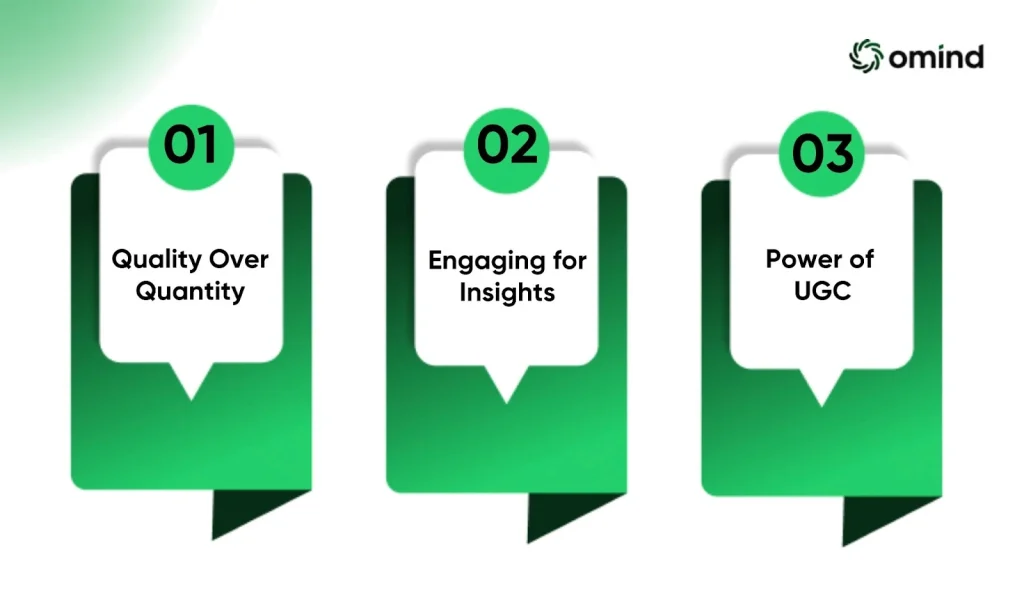The world of marketing has gone through several paradigm shifts now, thanks to advances in technology and the way content is consumed. What used to require hundreds of thousands of dollars in marketing budgets and weeks of planning can now be accomplished with a mobile phone—if you’re keeping up with the latest marketing trends. Companies reportedly spent over $3 billion on marketing during 2023, solely through a popular short video content app.
Similarly, there are an increasing number of new trends in marketing that we feel every business should consider switching to, if they’d like to stay relevant. Here’s your guide to some of the most popular ones.
Generative AI is the New Superhero
With constant updates to GPT, even as of May 2024, generative AI has only been rising up the ranks of the business marketing arsenal. Some 35% of companies globally are said to be using AI for marketing now. This is the power of generative AI. It can analyze vast amounts of marketing data to identify trends and patterns, and then use that knowledge to create high-quality, targeted content. Additionally, AI can automate data analysis tasks, freeing up marketers to focus on strategic initiatives.
Customer engagement is also crucial for marketing success. AI-driven chatbots can handle basic inquiries and product recommendations, providing 24/7 customer support and allowing human representatives to focus on complex issues. Conversational marketing utilizes AI to personalize communication across various channels, like social media messaging. This allows for more meaningful interactions and builds stronger customer relationships.
Lastly, the rise of AI means the rise of automation is not too far behind. Marketing involves a multitude of repetitive tasks. AI automation can streamline these processes, saving marketers valuable time and resources. From scheduling social media posts to optimizing ad campaigns, AI can handle the heavy lifting. This allows marketers to focus on creative strategies, campaign analysis, and overall marketing effectiveness.
Ever-Evolving Content Marketing
Content marketing has come a long way, constantly adapting to new technologies and audience preferences. Here are some key marketing trends that have shaped its evolution:

Quality Over Quantity
Gone are the days of churning out generic content. Today’s audience craves high-quality, informative pieces that offer real value. This could be in-depth blog posts, insightful infographics, or well-researched videos. Marketers are focusing on building trust and establishing thought leadership through their content.
Engaging for Insights
Content is no longer a one-way street. Interactive elements like quizzes, polls, and surveys are gaining traction. This allows marketers to not only engage audiences but also gather valuable psychographic data. Understanding users’ preferences, values, and behaviors helps tailor content that resonates even better.
The Power of User-Generated Content (UGC)
Authenticity is a major currency in today’s marketing world. User-generated content, like customer testimonials, social media posts featuring branded hashtags, or even creative product reviews, builds trust and credibility. Savvy brands are encouraging and leveraging UGC to amplify their message and connect with audiences on a deeper level.
Enabling The Right Influence

Influencers have been a popular marketing asset over the past decade, and there’s no stopping this unique wave of marketing that penetrates all types of demographics. Gone are the days of one-off influencer deals. Brands are now building long-term relationships with influencers who genuinely align with their values and target audience. Also, mega-influencers with massive followings are no longer the only game in town. Nano and micro-influencers, with smaller but highly engaged communities, are gaining traction. These niche audiences tend to trust these influencers more, leading to higher engagement rates and a sense of community around the brand.
Merging The Real And the Virtual
The world of VR and AR significantly took off after major tech and social media companies started advocating for a world that was connected through more than just traditional means. Over 17 million VR headsets were sold in the last 2 years, with one of the biggest tech players launching their own version last year, after much anticipation.
The ability to experience a product or service from the comfort of your home, but also in a space that’s much more fluid and interactive than a static picture or video, is a definitive value proposition for brands to turn to VR and AR for marketing.
While VR and AR have been around for a while, their initial adoption in marketing was limited due to factors like cost and accessibility. However, advancements in technology and the growing popularity of VR headsets and AR-enabled devices are paving the way for a potential comeback.
Keeping Pace with the Evolving Consumer: Strategies for Adaptation
Consumer behavior is constantly in flux, and businesses need to be agile to keep up. With all these ever-changing trends thanks to factors like the influencers and viral content and whatnot, here are three key areas where adaptation is crucial.
- Hyper-Personalization is King: Today’s consumers expect a tailored experience. Gone are the days of generic marketing messages. Businesses need to leverage data and analytics to understand individual preferences and deliver hyper-personalized content and offers. This can range from dynamic website experiences to targeted email campaigns that resonate on a deeper level.
- Seamless Multi-Device Experience: Consumers seamlessly switch between devices throughout their day. Businesses need to ensure a smooth and positive user experience across all platforms, be it mobile, desktop, or tablet. This means responsive website design, consistent branding, and easy access to information regardless of the device used.
Speak the Language of Your Customers

Voice search is transforming the way people interact with the internet. Gone are the days of meticulously typing keywords into a search bar. Today’s consumers are increasingly using voice or virtual assistants to find information on the go. To stay relevant in this evolving landscape, businesses need to optimize their websites for voice search. Here’s a deeper dive into this strategy.
- Natural Language Keywords: People don’t speak in SEO jargon. When searching by voice, they ask questions in a natural, conversational way. Focus on incorporating long-tail keywords and question phrases into your website content. Think about the kind of questions your target audience might ask related to your products or services, and make sure those questions and their answers are reflected on your webpages.
- Conversational Content: Structure your website content to sound natural and engaging, mimicking the way people speak. Use shorter sentences, bullet points, and answer-focused writing. Imagine you’re having a conversation with a customer and tailor your content to provide clear and concise answers to their queries.
- Local SEO Optimization: A significant portion of voice searches are location-based. If you have a brick-and-mortar presence, optimizing your Google My Business profile and ensuring your NAP SEO (Name, Address, Phone number) is consistent across the web is crucial. This increases your chances of appearing in local voice search results for relevant queries.
- Focus on Mobile Friendliness: Since most voice searches happen on mobile devices, having a mobile-friendly website is essential. Ensure your website loads quickly, has a clear and easy-to-navigate interface, and is optimized for touchscreens.
- Structured Data and Schema Markup: While users don’t see it directly, structured data markup helps search engines understand the content and context of your website. Implementing schema markup can improve your chances of appearing in featured snippets, which are often read aloud by voice assistants in response to search queries.
The Way Forward
It’s an exciting path forward for marketing in general. Trends change by the day instead of monthly now. Following these marketing trends ensures that you have a fighting chance to stay ahead of the curve when it comes to the competition, which is certainly tight-knit.
If you’d like a helping hand when it comes to marketing and marketing automation, Omind is your answer. Omind leverages AI to bring to you a conversational platform that helps visitors engage with your business and turns visitors into paying customers. To see how our platform works, schedule a demo today.


